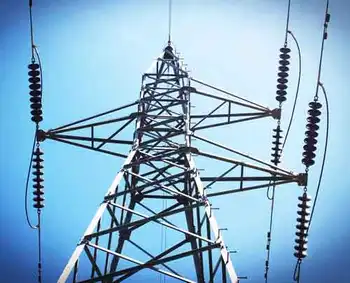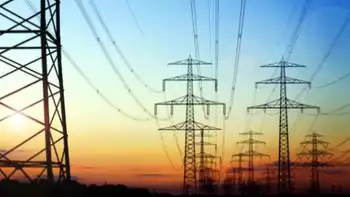Recession speeds coalÂ’s long-term decline
By Reuters
Substation Relay Protection Training
Our customized live online or in‑person group training can be delivered to your staff at your location.

- Live Online
- 12 hours Instructor-led
- Group Training Available
Power companies are reducing use of coal plants because of declining demand from heavy industry, the economic sector hardest hit by the recession. The loss of industrial "baseload" looks long term, analysts and executives say.
Natural gas-fired plants, easier to stop and start, have remained busy serving commercial and household power demand, which varies hour by hour and has been less affected by the recession.
"The recession's impact on our industrial customers has been significant," said Lonnie Carter, chief executive of Santee Cooper, South Carolina's state-owned power and water utility. "We anticipate that as the economy recovers from this economic downturn, long-term power needs will be lower."
Meanwhile, generators' reasons for preferring coal for baseload — lower cost and more reliable supply — weaken with every shale gas discovery, which drives gas prices down and suggests gas will be plentiful for years to come.
"We may be in a situation where we are redefining how much coal-fired generation we need," added Nick Akins, executive vice president of American Electric Power Co, one of the country's biggest coal burners.
Coal's share of U.S. power generation has fallen from 49 percent in 2007 to 45 percent this year, said Luther Lu of FBR Capital Markets.
Coal-fired generation fell 12.7 percent from June 2008 to June 2009, while gas-fired power remained steady, down only 0.3 percent, according to U.S. Energy Information Administration figures.
The decline occurred despite the fact that coal remains cheaper than natural gas. Average gas prices have fallen to $3.83 per MMBtu in second quarter 2009 from $11.73 in the year-ago quarter, according to EIA data.
Coal prices soared last year, but year-over-year have held steady at $2.24 per MMBtu in the second quarter of 2009 versus $2.04 in the second quarter of 2008, according to the EIA.
Total electricity sales in June were 7.3 percent below the same month last year, but industrial consumption fell 14.6 percent, U.S. government data show.
And industrial electricity demand growth will be the laggard out to 2030 in a generally slow-growth period for U.S. power, EIA data show.
U.S. demand is expected to grow 26 percent between 2007 and 2030, while industrial demand should grow 7 percent. In the same period, commercial demand will grow 38 percent and residential 20 percent, according to government estimates.
Beyond the fundamentals of supply and demand, power company executives face government action to slow global warming, which will discourage use of coal in favor of gas. Gas emits about 50 percent less greenhouse gas than coal.
"In a carbon-constrained world, there will be a fairly major shift toward gas," Matt Preston, senior coal analyst at Hill & Associates, said in an email.
This array of factors has caused Santee Cooper, American Electric Power and other power companies to trim plans to expand coal-fired generation, and some companies, such as Progress Energy, are replacing coal plants with gas units.
Coal may enjoy a brief curtain call, if the economy and industry rebound quickly, overwhelming the ability of natural gas, nuclear power and alternate energy sources to quickly respond to a demand surge, said Brian Gamble of Simmons & Co.
But long term, coal's share will be eroded by cleaner energy sources, Gamble predicted.
Coal executives and many analysts say low gas prices are temporary and President Barack Obama's commitment to America's most plentiful fuel, and the technology to burn it cleanly, guarantee coal's future.
"We firmly believe the stage is set for coal to outperform other fuels, once manufacturing activity begins even a slightly sustained increase," said Steve Leer, CEO of Arch Coal Inc, a leading U.S. coal producer.
But gas can serve industrial baseload, too, and utility executives increasingly are exploring it along with expanded nuclear, solar and wind power, Lu said.
"My sources tell me some utilities have actually gone out and spoken to gas producers to gain comfort whether this long-term supply picture is reliable," Lu said.
Many say it will be. Electric Power Research Institute recently forecast coal's share of the power market will shrink to 38 percent by 2030, with gas and alternatives' shares growing. That's considerably less than the latest EIA forecast, which puts coal-fired generation at 45.7 percent in 2030.
"Nothing is going to dominate like coal does today," said Revis James, director of EPRI's Energy Technology Assessment Center.











